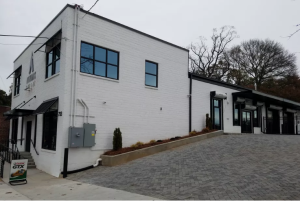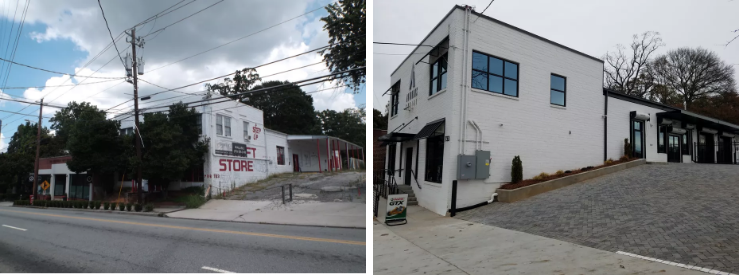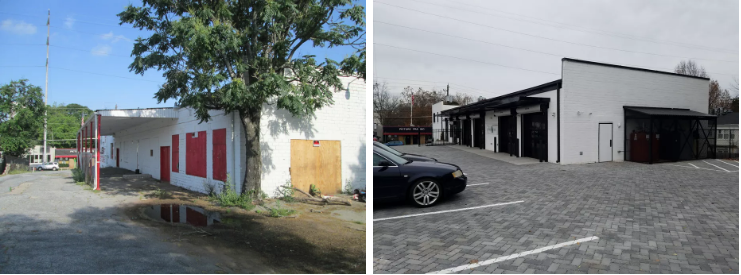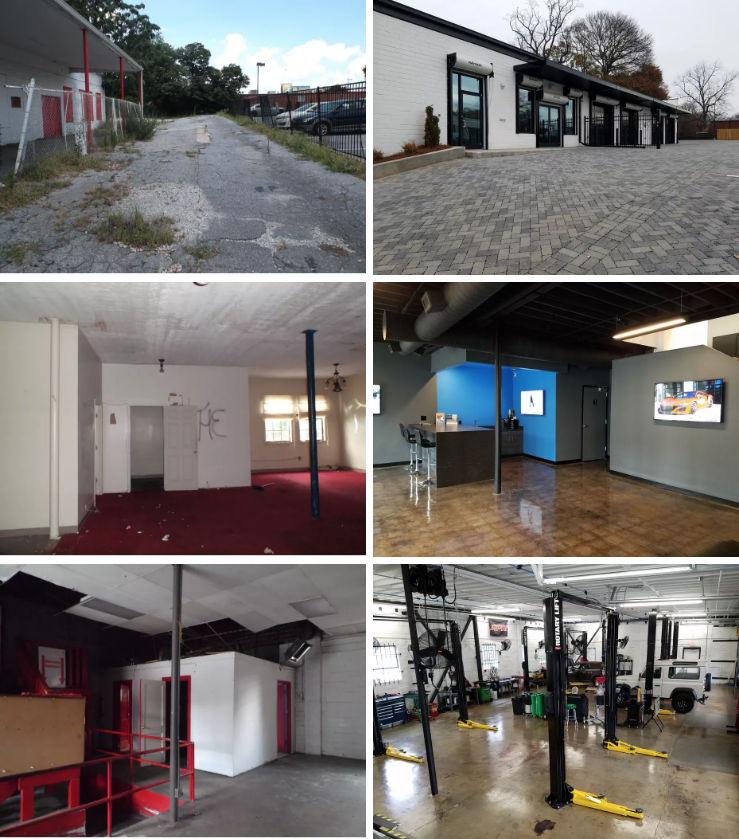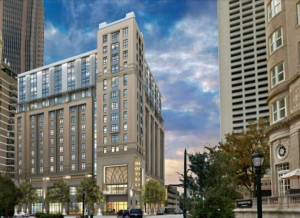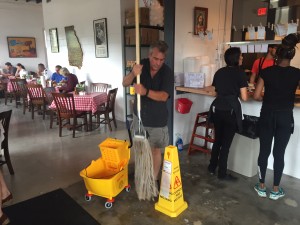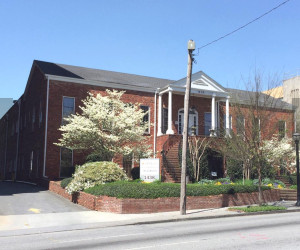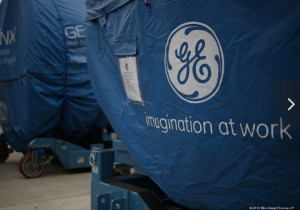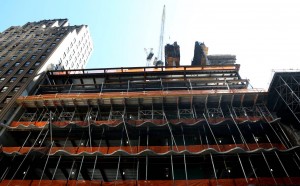Maurice Spagnoletti was hired to clean up Doral Bank. Did he uncover something that got him killed?

On the day Maurice Spagnoletti was murdered, his black Lexus sedan was full of balloons. It was June 15, 2011, the day before his wife’s birthday, and he was planning a celebration.
Spagnoletti, 57, was the No. 2 executive at Doral Bank in San Juan, Puerto Rico. Once flush, the bank had been almost ruined by a fraud scandal, and in 2007 it was rescued by Bear Stearns, Goldman Sachs, and a group of hedge funds. The Wall Street investors had put up $610 million, but Doral continued to lose money, and they were losing patience. In late 2010, Doral hired Spagnoletti, a New Jerseyan experienced in managing large banks, with orders to reduce costs and get Puerto Rican operations under control.
When the banker arrived on the island, he made a good first impression. At 6 feet 2 inches and about 250 pounds, with a strong Jersey accent and hands that he used to punctuate his sentences, Spagnoletti reminded his new colleagues of Tony Soprano without the menace. He’d walk through the Doral office, stopping at underlings’ desks to get up to speed on who ran what and how.
The sun was setting on another muggy San Juan day as Spagnoletti pulled out of Doral’s bland office park downtown. His wife was waiting at home with their 6-year-old daughter. He’d flown his sister-in-law in for the party, too. The drive to his condo on palm-tree-lined Condado Beach took just 15 minutes when there wasn’t traffic. But a few minutes after Spagnoletti got onto the highway, he slowed for a backup on a bridge over a canal. Another car pulled up alongside his. Someone fired at least nine shots from a .40-caliber handgun, shattering his windows, and four bullets hit him in the head. Spagnoletti’s momentum sent his car veering off the highway, and it came to a stop in a thicket of tropical brush. The police arrived, and at 7:21 p.m. they pronounced him dead.
The identities of Spagnoletti’s killers are still a mystery, and the bank overhaul that he was hired to lead didn’t work without him. Doral collapsed in 2015, the biggest U.S. bank failure since 2010, done in by bad loans and Puerto Rico’s decade-long economic spiral. The Wall Street investors who hadn’t already sold were wiped out, and the U.S. government spent $700 million to cover depositors’ losses.
Today, almost everyone in San Juan banking circles has a theory about the murder. Some believe only Colombian hit men could pull off such an assassination. Others say Spagnoletti had enemies in the U.S. who caught up with him. His widow, Marisa, revealed her own theory in a 2013 lawsuit: She said he was killed because he uncovered fraud at the bank and fired an executive he suspected of embezzlement. Doral’s lawyers called her claims ridiculous, and after Marisa admitted in a deposition that she had no evidence, she withdrew the suit.
Since then, new details of the killing have emerged. And according to former Doral executives and people working on the criminal investigation, the widow was onto something. “Let’s use our common sense for a second,” says María Domínguez, who was in charge of an investigation into Doral as first assistant U.S. attorney in San Juan until she retired last year. “This guy was brought by the bank to put the house in order. He starts uncovering certain things that are irregular at the bank. He starts to take corrective action. These circumstances strongly suggest a financial motive to get this guy out of the way.”
But this wasn’t the usual Puerto Rican corruption. The real story of Maurice Spagnoletti’s murder may be more bizarre than anyone knew.
Doral Bank’s founder was Salomon Levis, whose Jewish father fled Poland to escape the Nazis. The family settled in Cuba, where Salomon was born, then moved to Puerto Rico. In 1972, Levis and his siblings started a mortgage company that would become Doral. The bank took off as the island prospered, and by 2001 it was originating almost half the home loans in Puerto Rico. Its profits peaked at almost $490 million in 2004. Around then, the Levis family’s 8 percent stake in the bank was valued at $355 million, making them among the island’s richest people. Salomon Levis, who had become a corpulent playboy, was a fixture at high society events, and the gossip pages chronicled his divorce and remarriage to a much younger blond lawyer.
Then it all unraveled. In 2005 the bank revealed it had inflated its earnings by about $1 billion, prompting investigations. Levis wasn’t charged, but his nephew went to prison for fraud, and the Levis family was forced out of the bank.
“We had a real mess,” says John Ward, who was appointed interim chief executive officer in 2005. The bank didn’t have enough money to pay off $625 million of debt coming due. The board wanted a CEO from outside Puerto Rico to clean house and attract new investors. In 2006 they found Glen Wakeman, who was running GE Capital’s consumer credit business in Mexico and the rest of Latin America.
Wakeman, then 46, had graduated from the University of Scranton and spent more than 20 years working for General Electric around the world. In Mexico he’d taken a stagnant business and more than doubled its size, according to Mark Begor, his boss at the time, who calls Wakeman an “energizing and passionate leader.” To lure him to Puerto Rico, Doral offered a minimum of $5 million in pay over the first two years, plus $1.5 million in stock and $6 million to make up for his GE pension.
Wakeman believed fervently in the GE management philosophy. He liked to talk about Six Sigma, the quality mantra popularized by former GE CEO Jack Welch. He hired bankers from Bear Stearns to find new investors, shuttled to New York to meet with hedge funds, and replaced most of Levis’s deputies.
Lesbia Blanco, then 59 and a human resource director at Johnson & Johnson, was one of the new executives. As Doral’s new chief talent and administrative officer, Blanco was part of Wakeman’s inner circle, with an office near his on the ninth floor of headquarters. She soon realized something strange was going on at Doral. One Saturday in 2006 or 2007, she says, when she was working overtime to help prepare the bank to court Wall Street investors, a security guard came by her office. He told her there was someone in Wakeman’s office he didn’t recognize and showed her a security-camera picture of a man wearing a beaded necklace and clothes that were unusually casual for the executive floor.
Blanco walked over to investigate. Wakeman’s secretary was there with the stranger. She told Blanco that the man was her Santeria godfather and that he was helping the bank with its recapitalization.
The religion known as Santeria emerged in the 16th century among people from West Africa, called Yoruba, who were enslaved and brought to the Caribbean. Co-opting the Catholicism that their captors tried to impose, they picked saints to represent their deities and continued to worship them in secret, with drum circles and animal sacrifices in the woods. The religion now has about 70,000 followers in Puerto Rico, according to Joaquín “Kimmy” Solis, president of the island’s Yoruba association.
The man Blanco saw in the CEO’s office was Rolando Rivera Solis. Kimmy Solis says Rivera, a distant cousin, is a babalawo, or Santeria high priest. As a babalawo, Rivera can initiate others into the religion, conduct sacrifices, and divine the destinies of his followers by tossing coconut rinds on the ground.
Blanco started seeing Rivera on the executive floor more and more. “He had access to Glen’s office directly,” she says. She says her secretary once had to clean Wakeman’s clothes – it’s not clear of what – after a ritual at the Santeria priest’s house.
Blanco wondered why the American CEO was dabbling in the local religion, but kept her questions to herself. Wakeman was close with his secretary, Nancy Vélez. Other than his driver, who doubled as a bodyguard, she was the only person allowed to ride in the executive elevator with him. She would walk him out of the building, carrying his briefcase, then kiss him goodbye on the cheek as he got into his chauffeured car, according to two people who saw them. Such embraces aren’t uncommon in Puerto Rican culture.
Other Doral employees started to notice unusual things. Juan de la Cruz, the bank’s vice president for security, says someone told him Vélez and Rivera were conducting Santeria rituals in the boardroom. There was no security camera there, but de la Cruz checked the footage from one in the hallway. “I looked in the camera and saw Rolando,” he says, “walking with the luggage and some bottles in his hand.” De la Cruz says he dropped his inquiry after another employee who practiced Santeria told him that the rituals were sanctioned by Wakeman.
A former administrative assistant, who asked for anonymity because she’s afraid of the babalawo, says Vélez told her about one ritual involving a caiman, an alligator-like reptile native to Puerto Rico. Rivera, Vélez, and another Doral employee drove the caiman to the parking lot early one Sunday, the former assistant says, and used Vélez’s access to the executive elevator to bypass security. Dressed all in white, they took the caiman into the conference room and invoked the names of each board member, the former assistant says she was told. She adds that she thinks the creature wasn’t killed, because she didn’t see any blood the next day.
Lizzie Rosso, Doral’s general manager for consumer banking at the time, says someone who was at the caiman ritual told her about it the following Monday. Other former Doral employees declined to discuss the subject. “Maybe they are afraid of the Santeria and the consequences,” Rosso says, laughing nervously. “I don’t want to be killed.”
Solis, the Yoruba association president, is skeptical that a caiman would have been involved. “We sacrifice rams, goats, chickens, roosters — all this is part of the ancient religions,” he says. “I don’t believe that the caiman has the power to do anything.”
If Rivera did perform a ritual, it was apparently successful. In May 2007, Doral announced it had sold 90 percent of its stock for $610 million to a group of investors including Bear Stearns, Goldman Sachs, Marathon Asset Management, D.E. Shaw, and Perry Capital. Eleven months later, Rivera was given a contract to clean Doral’s headquarters and branch offices. The head of the previous janitorial service says she’d never heard of Rivera in her 17 years in the local cleaning business. Rivera’s company, SJ Tropical Maintenance Services, wasn’t registered until the month he won the contract. And while the old cleaners charged $23,000 a month, SJ Tropical was given $27,350.
Blanco says the contract was sanctioned by Wakeman. “It was a reward for helping Glen [keep] the bank afloat,” she says.
Wakeman, who’s been working as a consultant in Miami since Doral failed, denies any allegations he’d been involved with Rivera, practiced Santeria, or rewarded the high priest. “This is both shocking and untrue,” he says. Wakeman’s lawyer declined to comment further.
Rivera’s lawyer, Melanie Carrillo-Jiménez, says that while her client is a high priest, he didn’t perform any ritual for the bank. “He wasn’t getting paid for any Santeria whatsoever,” she says. “Where the hell did this come from?”
Doral’s vice president for property and facilities, Annelise Figueroa, oversaw the new, more expensive maintenance contract. She says the contract included additional services and was approved by Wakeman, who, Figueroa says, did practice Santeria. “Wakeman used Rolando,” she says. “When I found out, obviously I thought it was weird, but then again you can’t mess with people’s religions.”
Figueroa and Blanco, her boss, didn’t make an issue of the janitorial contract. But in 2009 and 2010, they accused each other of inflating the costs of other services. Blanco says she investigated her subordinate and told Wakeman that the bank should fire Figueroa. Wakeman overruled Blanco, without saying why, she says, and began to freeze her out. “Since that day, my life was miserable there,” Blanco says. “He didn’t involve me in any meetings. I was just there like a piece of paper that you move from one side to another.”
Blanco left Doral in October 2010. By then, Wakeman had already given some of her responsibilities to a new executive: Spagnoletti. “He had access to all the information in my computer,” Blanco says. “All the details on what had happened to that investigation. Perhaps he got suspicious and started digging.”
Blanco says she feels lucky she escaped with her life. “I thank my Lord every day,” she says. “That person didn’t go there to be killed, but to work. It’s bad.”
Marisa Spagnoletti now runs a handbag boutique in Morristown, N.J., called Lucy’s Gift, named after her daughter. The handbags are displayed by color — blue and pink on the left, orange and white on the right. A photo of Maurice with his arms around Marisa and their daughter sits on a mantel, surrounded by pink cloth roses and Christmas lights. All the profits go to charities to honor Spagnoletti’s memory.
“When Maurice was killed, it took so long to get on my feet,” Marisa says on an April morning, her eyes filling with tears. “Do you know what it’s like for a girl to cry every day, ‘Who killed my daddy?’ ”
Two women walk into the shop to browse. Marisa has never met them but tells them a little about Maurice’s murder. She says she still cries herself to sleep every night. With a reporter, Marisa won’t discuss her lawsuit against Doral, other than to say the bank hasn’t given her any money. When she withdrew the suit, she did so in a way that allows her to refile it later. When the truth comes out, she says, it will show that Maurice was a hero. “My husband would die with honor rather than live a life of dishonesty,” she says.
Spagnoletti started working as a bank teller in New Jersey as a teenager, according to his widow. He got a business degree at night and worked his way up in the course of 20 years, eventually becoming president of Summit Bank’s Pennsylvania division. He raised two children with his first wife. Then, in 1999, Maurice reconnected with Marisa. They’d worked together at a Summit predecessor but didn’t know each other well and had been called to testify in a court case about the bank. Maurice and Marisa were both Italian and Catholic. He’d grown up in Jersey City, and she was from Bayonne, just a few miles away. Spagnoletti was 11 years older. On the last night of the trial, he asked her out. They were married the next year.
Marisa says Maurice would cheer her up when she had problems at work. “Go look outside,” he would say. “The sun’s out, the sun’s going to always come out. Everything can be solved.”
In 2000, Spagnoletti joined Fifth Third Bank. He became head of its central Indiana affiliate, presiding over branch openings and organizing field trips for schoolchildren. He won over his new colleagues with jokes but held them accountable for meeting the goals they set. Spagnoletti would invite them and their spouses to his home for bocce and pasta. He said the word “great” so incessantly that it became a running joke at the office.
After a few years at another bank in South Carolina, the Spagnolettis moved back to New Jersey around 2008 because Marisa’s father was dying. Maurice used the free time to dote on his daughter, who was then 3. Bruce Balmas, who worked with him at Fifth Third and Doral, says his friend would call him from the park and say, “I never could have done this before.”
Two years later, recruiters contacted Maurice, asking if he’d consider moving to Puerto Rico. The package at Doral included, in addition to a $400,000 salary, a $300,000 target bonus, making him among the highest-paid people at the bank. Spagnoletti was hired as executive vice president for mortgage and banking operations, responsible for what happened in Puerto Rico day to day.
When Spagnoletti arrived in September 2010, Wakeman was battling the Federal Deposit Insurance Corp. The CEO was saddled with billions in loans the bank had made under its previous owners; as Puerto Rico tipped into recession, Doral had to keep marking the loans down, eroding its capital. The FDIC blocked Wakeman’s plan to buy assets from Doral’s rivals, and without a clear plan for growth, some of the bank’s Wall Street investors bolted. Goldman Sachs lost at least $30 million, and the hedge funds Marathon, D.E. Shaw, and Perry lost about $50 million each, filings show.
After the killing, Marisa was hysterical. The bank sent armed guards to walk executives home.
Spagnoletti admired Wakeman as a CEO and believed the bank could be turned around. “I’m working harder than ever, but I must say I love it,” Spagnoletti wrote in an e-mail to a friend on April 22, 2011. “I make significant contributions and feel very appreciated. One problem is the lack of talent. I need to check everyone’s answer twice. Otherwise, this is a GE type of environment. Sigma Six black belts running around.”
Initially, Spagnoletti commuted from New Jersey. He and Marisa never stayed apart for more than three days. They lived in a Marriott hotel for a while, and then a condo on Condado Beach. In the spring of 2011, Spagnoletti hired Balmas as a consultant; they had dinners at an Italian restaurant by the beach and spent some nights gambling at casinos on the Condado strip. Spagnoletti loved to swim and take his daughter to look for seashells.
But that same spring, Spagnoletti clashed with Figueroa, the facilities vice president who handled the Santeria priest’s maintenance contract. They fought about purchases as small as a table, according to a lawsuit she filed against the bank in 2012 alleging gender discrimination. On March 8, Spagnoletti e-mailed Figueroa asking whether she understood that she was supposed to follow his orders. “Do you understand that as a Vice President of this company, you are also expected to always exercise good judgment in the performance of your duties?” he wrote. “YES, ALWAYS HAVE AND ALWAYS WILL,” she replied, according to her lawsuit, which was settled confidentially.
Marisa alleged in her lawsuit that her husband uncovered fraud at Doral, in the form of Figueroa paying vendors for services they didn’t perform and making unauthorized transfers of $30,000 a week to someone. If Spagnoletti knew about Doral’s Santeria circle or the idea that the payments might have been not fraud but a reward for supernaturally assisting the bank, he kept it from his wife. Figueroa, who was fired on May 25, 2011, says she did nothing wrong and doesn’t know anything about the murder. “I’m more anxious than anyone to find out who did it to clean up my name,” she says.
Three weeks after Figueroa’s termination, on the day he was killed, Spagnoletti left work on the early side. Balmas departed later and got stuck in traffic by the bridge. He didn’t think anything of the shattered Lexus on the side of the road.
Around 2 a.m., a colleague called to tell him what had happened. Balmas went to the Spagnolettis’ apartment and found Marisa hysterical, talking about how her husband had been kidnapped. Wakeman had been there, along with other colleagues, and the bank sent armed guards to walk them home. Doral assigned security guards to other top executives, and Wakeman brought guards with him to Spagnoletti’s New Jersey funeral.
As investigations into Spagnoletti’s murder began, Doral struggled. The Puerto Rican economy only got worse, and more of the bank’s loans became worthless. The FDIC wouldn’t give Doral’s balance sheet its seal of approval, and without it, Doral couldn’t get the money it needed to operate. Wakeman tried expanding in the U.S. He moved Doral’s headquarters to Miami in 2013. U.S. operations showed a profit that year, but it wasn’t enough to make up for the deteriorating Puerto Rican portfolio.
In 2014, Puerto Rico created a major crimes unit, headed by Captain Ferdinand Acosta, and he took up the Spagnoletti murder. There weren’t many leads. None of the 911 callers got a good look at the shooter or his vehicle, Acosta says. The murder was definitely not random, but the shooter exhibited poor aim, so he may not have been a professional gunman. Acosta says he started interviewing Doral employees but got word from the FBI to back off. “They prefer to do it alone,” he says.
The FBI’s murder investigation, begun shortly after the 2011 shooting, had expanded to include fraud — just as the widow Spagnoletti had charged. In December 2014 the FBI raided Doral, seizing computers from Wakeman, his secretary, and other executives. In February 2015, Rivera and Figueroa were arrested and charged with fraud. The federal indictment said that Figueroa changed the cleaning company’s contract so that it was getting $24,288.27 every week instead of every month. In all, according to prosecutors, the pair wrongfully took about $2.4 million.
Two days later, on Feb. 25, the FDIC closed Doral’s doors for good. The agency spent $698.4 million making Doral’s depositors whole. Many of the branches, along with the headquarters, were sold to Popular, another Puerto Rican bank. The headquarters building is empty now. A rusty outline remains where the Doral sign used to hang.
Motombo grabbed a woman as a shield. “Don’t do this,” she cried. He started shooting.
Days after the bank failed, Santeria stories surfaced in local newspapers. El Nuevo Día wrote that there had been a ritual with a caiman at the bank. Levis, the founder, went on the radio to joke about it. The failure of Doral is like a “detective novel,” he said. “Not even the caiman could save them at the end.”
When Rivera came to court to plead not guilty to fraud, the proceedings revealed that police had found 10 guns in his home. All were legally registered to him or his wife. Prosecutors said Rivera had been charged with murder once before, in 1983, and was acquitted. He was put under house arrest, with an electronic monitoring bracelet. Figueroa also pleaded not guilty.
Eight months later, in October 2015, the agents looking into Spagnoletti’s murder caught a break: A man on Puerto Rico’s most-wanted list was arrested at San Juan’s airport. He’d worked for Rivera at his janitorial company, according to two people with knowledge of the investigation.
His name is Yadiel Serrano-Canales, aka Motombo, and, according to prosecutors, he was a member of a gang that dealt cocaine and heroin in San Juan’s Villa Esperanza housing projects. In a court filing, an FBI agent described a June 2012 incident that got Motombo on the most-wanted list. Just after 1 a.m., he and a friend approached three off-duty police officers who were hanging out at a bar across from the projects. After words were exchanged, Motombo left and returned with a gun. “Put down the phone, d—sucker,” Motombo said to one of the officers. The cops pulled out their own guns; Motombo grabbed a nearby woman by her hair, using her as a human shield. “Motombo, don’t do this!” she cried. He fled, firing four times at the police officers, and escaped the island. In 2015 he arranged to return to Puerto Rico and turn himself in.
FBI agents interrogated Motombo for about an hour in a windowless room on the second floor of San Juan’s police headquarters. A person with knowledge of the FBI’s investigation and one of the Puerto Rican police officers say Motombo is suspected of driving Spagnoletti’s shooter. Motombo has not been charged in connection with that. He is in federal custody, facing attempted murder charges for the police shootout. He pleaded not guilty, and his lawyer declined to comment.
In November, Wakeman’s secretary, Vélez, was arrested and charged with perjury for telling the grand jury she didn’t know about the payments to the Santeria priest. Prosecutors say she instructed two Doral employees to pay Rivera weekly rather than monthly. Vélez pleaded not guilty. Her lawyer, Mariela Maestre Cordero, declined to comment.
In April the Doral case took yet another turn. U.S. prosecutors moved to drop the charges against Rivera and Figueroa. They withdrew the indictment “without prejudice,” meaning that they can file new charges with more information if they choose to.
A day after the about-face, I drive to a gated community in a suburb of San Juan to meet Rivera, the person I’d heard so much about. I find a chubby man with a neatly trimmed gray chinstrap beard standing on the porch of a two-story gray stucco house. The Santeria priest is wearing gold bracelets on his wrists and an electronic bracelet on his ankle. Rivera shakes my hand and offers my translator a light. He cuts off my halting attempt to introduce myself in Spanish. “I speak English,” he says, without an accent. Then he tells me to call his lawyer.
His attorney, Carrillo-Jiménez, says her client had nothing to do with Spagnoletti’s murder and that the payments he received were for janitorial services he performed. “People are speculating,” she says. “There is no evidence whatsoever.”
Douglas Leff, the FBI special agent in charge of the San Juan division, held a news conference on June 15, the fifth anniversary of the shooting. He announced a $20,000 reward for information leading to an arrest, and Marisa offered $10,000 of her own. The authorities are in the final stages of their investigation, he said, and have a great deal of information about the culprits. In an interview, Leff declines to comment on potential suspects. The fraud and murder investigations, he emphasizes, are proceeding on independent tracks. “We’ve been working it very diligently, and we have a lot of momentum,” he says about the murder. “The more digging we do, the more potential avenues we find to work. There may be different people with different levels of culpability.”
When I visit Marisa, she says she has complete faith that the FBI will solve the case. “You need to understand,” she says, “that justice is coming.”
Written by Zeke Faux for Bloomberg Businessweek


